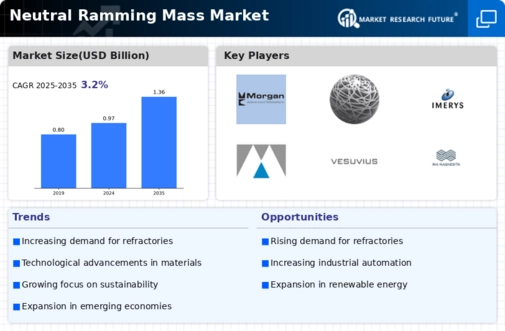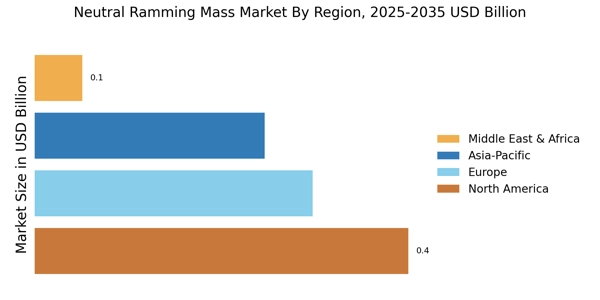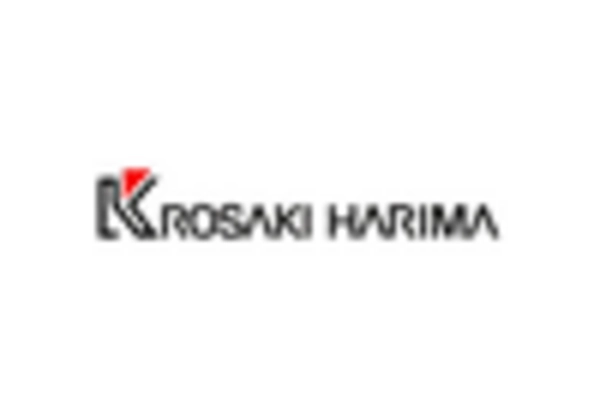Rising Focus on Energy Efficiency
Energy efficiency is becoming a central theme within the Neutral Ramming Mass Market. As industries strive to reduce operational costs and minimize environmental impact, the demand for materials that enhance energy efficiency is on the rise. Neutral ramming mass, known for its excellent thermal insulation properties, plays a crucial role in optimizing energy consumption during high-temperature processes. Companies are increasingly recognizing the long-term cost benefits associated with using energy-efficient materials, which may lead to a shift in purchasing decisions. This trend is expected to drive the growth of the neutral ramming mass market, as industries seek to implement more sustainable practices.
Increasing Demand from Steel Industry
The Neutral Ramming Mass Market is experiencing a notable surge in demand, particularly from the steel manufacturing sector. As steel production continues to expand, the need for high-performance refractory materials, such as neutral ramming mass, becomes critical. This material is essential for lining furnaces and ladles, ensuring optimal thermal efficiency and resistance to chemical wear. Recent data indicates that the steel industry accounts for a substantial portion of the overall refractory market, with projections suggesting a growth rate of approximately 4% annually. This trend underscores the importance of neutral ramming mass in maintaining the integrity and efficiency of steel production processes.
Growth in Non-Ferrous Metal Production
The Neutral Ramming Mass Market is also benefiting from the growth in non-ferrous metal production. Industries involved in the production of aluminum, copper, and other non-ferrous metals require high-performance refractory materials to withstand extreme conditions during processing. The increasing demand for these metals, driven by sectors such as automotive and construction, is likely to propel the need for neutral ramming mass. Market analysis suggests that the non-ferrous metal sector is projected to grow at a rate of 5% annually, further solidifying the position of neutral ramming mass as a critical component in the production processes of these metals.
Regulatory Compliance and Quality Standards
The Neutral Ramming Mass Market is increasingly influenced by stringent regulatory frameworks and quality standards. Governments and industry bodies are imposing regulations to ensure that refractory materials meet specific performance and safety criteria. Compliance with these standards is essential for manufacturers aiming to maintain market competitiveness. As a result, companies are investing in quality assurance processes and certifications to align with these regulations. This focus on compliance not only enhances product reliability but also fosters consumer trust. Consequently, the demand for high-quality neutral ramming mass is expected to rise, as industries seek materials that adhere to these evolving standards.
Technological Innovations in Refractory Materials
Technological advancements are playing a pivotal role in shaping the Neutral Ramming Mass Market. Innovations in material science have led to the development of enhanced formulations that improve the performance characteristics of neutral ramming mass. These advancements include the incorporation of advanced additives that enhance thermal stability and reduce wear rates. Furthermore, the introduction of automated mixing and application techniques has streamlined production processes, resulting in higher quality products. As manufacturers continue to invest in research and development, the market is likely to witness a shift towards more efficient and durable refractory solutions, thereby driving growth in the neutral ramming mass segment.


















Leave a Comment